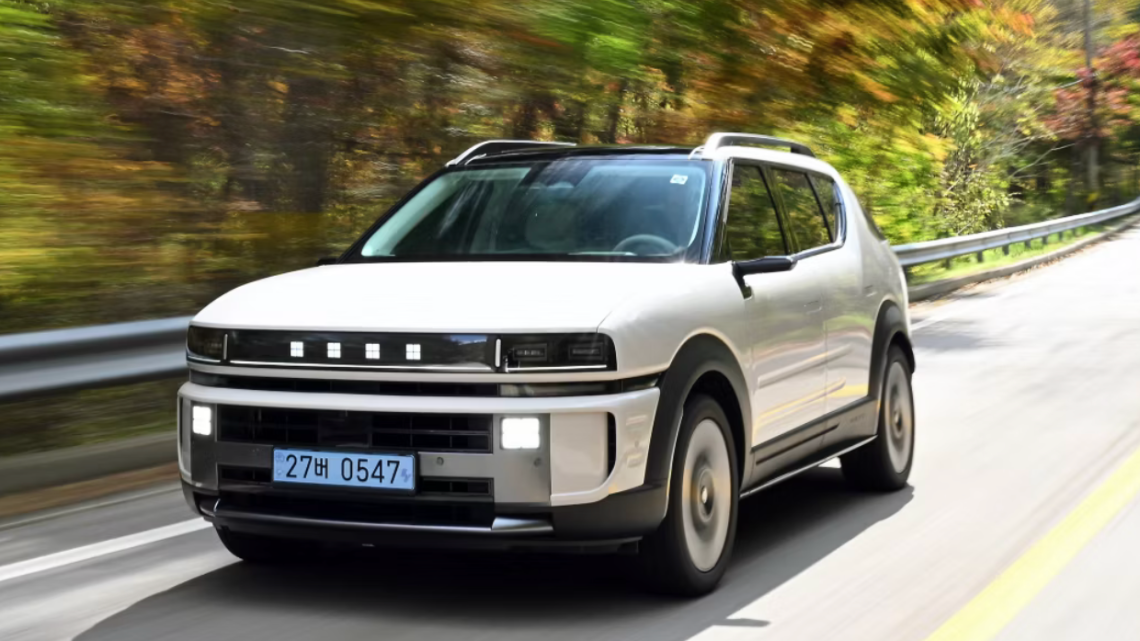
Hyundai Unveils All-New NEXO: Advancing Hydrogen Fuel Cells for Zero-Emission Mobility
November 12, 2025Seoul’s always been a hotbed for automotive breakthroughs, so it was fitting that Hyundai Motor Company picked it to debut the next-gen NEXO. The city’s veins are already pumping with ambitions around hydrogen production and a push toward zero-emission technology. Journalists and hydrogen enthusiasts packed the venue for live cold-start routines and lightning-fast refill demos. It’s wild to think it all began when Hyundai first toyed with fuel cells back in the mid-’90s.
Fuel cells once sounded like sci-fi—remember the Tucson ix35 Fuel Cell in 2013 or the original NEXO in 2018? Those models laid the groundwork for today’s drive toward decarbonization and sustainable energy on wheels. The new NEXO picks up where they left off, riding that hydrogen legacy hard into a cleaner future.
Powertrain Overhaul
Under the hood, the heart of this NEXO is a revamped hydrogen fuel cell stack pumping out 110 kW—about 16% more juice than before. Hyundai’s nerds tweaked the membrane-electrode handshake so the car fires up quicker even when it’s freezing, tackling one of the classic hurdles of early fuel-cell rides.
Hooked up to that is a meaner electric motor rated at 150 kW, plus a cushier battery pack that doubles capacity to 80 kW. The result? This SUV zips from 0 to 100 km/h in just 7.8 seconds, proving that zero-emission technology doesn’t mean trading away speed.
Hyundai didn’t stop there—they’ve beefed up fuel cell durability with hardcore life-cycle testing so the stack can shrug off years of use. Translation: fewer nasty surprises in your repair bills and a smoother ride for your wallet over time.
Extending the Range
One of hydrogen’s superpowers is how fast you can refuel—and Hyundai leaned into that. The NEXO packs three composite hydrogen storage tanks holding 6.69 kg (up from 6.33), giving you a certified 700-plus km range under Korean Ministry rules. Road trips just got a whole lot less stressful—with a pit stop of around five minutes, you’re back on the road.
Smart Safety Suite
Safety’s a big deal, and Hyundai didn’t cut any corners. The NEXO’s built on a multi-skeleton frame of ultra-high-strength steel to shield the passenger cell, plus nine airbags scattered over strategic zones. Its Advanced Driver Assistance System (ADAS) wraps in Forward Collision-Avoidance, Lane Keeping, Blind-Spot Collision-Avoidance, and Smart Cruise Control, all eyes and ears on the road so you can chill out behind the wheel.
Beyond Driving: V2L Capability
Here’s a neat party trick: the NEXO borrows Vehicle-to-Load (V2L) from its battery EV siblings, so you’ve got indoor and outdoor power outlets. Need to charge power tools, run your laptop, or even kickstart your home during an outage? The NEXO’s hydrogen tank doubles as a mobile energy hub—perfect for camping trips or surprise blackouts.
Industry Ripple Effects
Hyundai flexing its fuel cell chops could send ripples through the industry. If the NEXO makes hydrogen refueling feel as normal as gas stations, watch out for:
- Big boosts in hydrogen production plants and massive electrolysis setups.
- A spike in jobs—from station techs to R&D pros—lifting local economies.
- Alliances between carmakers, energy outfits, and governments to weave a solid hydrogen infrastructure.
- Grown-up partnerships with battery EVs, carving out niches like long-haul haulers and fleet vehicles.
And that’s not all. More demand for green hydrogen means electrolysis tech gets sharper, which then spills over into cleaner ammonia production for farms and ships. It’s a chain reaction: one sector invests in electrolyzers, and the knock-on effects boost everyone’s bottom line.
In many ways, the NEXO is a bellwether: when OEMs push the envelope on performance and safety, they set the ball rolling for policy-makers to greenlight more stations, for investors to back incentives, and for drivers to give hydrogen a real shot alongside battery EVs.
Why Now?
So why is this moment ripe? Policies are lining up: Europe’s rolling out hydrogen corridors, South Korea’s flexing clean transport rules. Green hydrogen from renewables is getting cheaper by the day, and the NEXO’s hitting 97.8 km per kg in tests, with fill-ups that go head-to-head with gasoline. It makes a solid case for hydrogen as a top-tier sustainable energy carrier.
Add a dash of subsidies and tax carrots in key markets, and suddenly FCEVs aren’t just a neat idea—they’re a smart choice for fleet operators chasing green credentials.
Looking Ahead
Will hydrogen cars become as ubiquitous as EVs? Time will tell. It really comes down to how fast we can bolt together stations and ramp up low-carbon hydrogen. But the new NEXO is a milestone—it shows FCEVs can marry performance, safety, and everyday convenience. As economies of scale kick in and R&D keeps humming, expect costs to shrink.
At the end of the day, drivers shop on price. Hyundai’s hinting that as production scales up and supply chains mature, hydrogen fuel cell vehicles will inch closer to cost parity with battery EVs by mid-decade—especially if more green hydrogen comes online. That could be a real game-changer.
And with more players jumping into the FCEV game, competition will stoke the fire of innovation—from lighter stack materials to smoother supply logistics—fast-tracking the broader energy transition in transport and beyond.
About the CompanyHyundai Motor Company, born in 1967, is one of the world’s top carmakers and a trailblazer in fuel cell innovation. With a can-do spirit, it’s forging new partnerships and diving deeper into zero-emission mobility every day.


 With over 15 years of reporting hydrogen news, we are your premier source for the latest updates and insights in hydrogen and renewable energy.
With over 15 years of reporting hydrogen news, we are your premier source for the latest updates and insights in hydrogen and renewable energy.